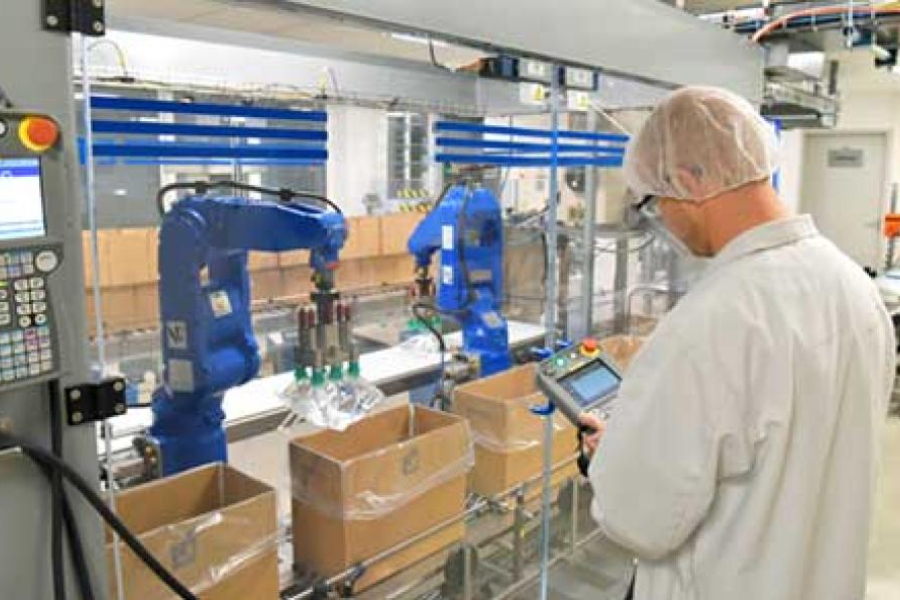
What is Driving the Growth of Packaging Automation?
The business challenges of the past few years — labor shortages, supply chain disruptions, and inflation — have accelerated the long-term trend toward the automation of packaging operations.
All types of manufacturers and distributors, including food and beverage, pharmaceuticals, automotive, and e-commerce companies, are turning to packaging automation to enhance profitability and to ease pressures on their business and their employees.
EVOLVING PACKAGING TECHNOLOGY
Automation solutions range from fundamental capabilities that have been used for decades, such as stretch wrapping, case erecting and sealing, coding and labeling, bagging, and shrink wrapping to industrial robots and autonomous systems that efficiently perform pick and place, boxing, and palletizing.
The technology is evolving, with sensors and machine vision systems that can outperform human capabilities, touchscreen controls that are easier to learn and easier to use, and communications capabilities (including IoT) that facilitate remote system monitoring, preventative maintenance, and performance analysis.
ROI FOR PACKAGING AUTOMATION
The rapid acceleration in the adoption of automation tends to be driven more by business needs and the current economic conditions than by advancements in technology. The return on investment can be the highest when manual processes are replaced by relatively mature automation solutions. Automation achieves several direct and indirect benefits:
Overcoming Labor Challenges. While the pure cost of labor has always been a key driver towards increased automation, it has become increasingly difficult in recent years to find available, reliable labor with the baseline skills needed to operate their shipping and manufacturing facilities and keep operations running smoothly.
Productivity and Flexibility. Automated packaging machinery is much faster than manual packaging. The speed accelerates throughput and provides much-needed flexibility – think quicker changeovers and responsiveness to volatile demand spikes.
Transportation Costs. The right packaging equipment can provide the flexibility needed to downsize materials to reduce dimensional weight. Lighter packages mean lower freight costs.
Quality Control. Packaging automation also plays a critical role in quality control. Vision systems are very effective in detecting defects and eliminating waste, considerations that are foundational to companies pursuing sustainability goals and ESG requirements. Automated systems also facilitate traceability and data-driven manufacturing processes.
Safety. Manual packaging is repetitive and can cause employee fatigue and repetitive stress injuries. A safer work environment also improves employee satisfaction and retention which helps to mitigate labor shortages. In the food industry, automatic packaging also reduces the risk of food contamination.
Consistency. Automation offers consistency as it relates to performance, reliability, appropriate material usage, and more. This increase in consistency helps eliminate waste and maintain a reliable packaging chain.
SUPPLYONE’S COMPREHENSIVE PACKAGING AUTOMATION PROGRAM
When implementing a packaging automation solution, whether choosing standalone packaging equipment, or installing a complete packaging automation line, the machinery should be ideally suited to the specific application, as well as to your company’s particular operational, financial, and marketing objectives.
SupplyOne offers a comprehensive packaging automation equipment program, covering a full array of primary, secondary, and end-of-line solutions ranging from case erectors to shrink wrapping equipment and stretch wrappers, to thermoforming equipment and vacuum chamber sealers, to industrial robots, or even an entire fully automated packaging system.
SupplyOne Equipment Specialists consult on the overall line layout and design, bringing strategic knowledge to make application-specific recommendations. that enhance productivity and safety, reduce downtime, extend equipment life, accelerate speed to market, and increase cash flow.
THE BOTTOM LINE
The return on investment for packaging automation has become increasingly favorable as companies respond to labor shortages, supply chain disruptions, and inflation. Automation enhances profitability in several ways: it can lower expenses by reducing labor, waste, and transportation costs, and it can increase revenues, by expanding throughput and providing the flexibility to respond to spikes in demand and new market opportunities. Moreover, packaging automation makes companies more resilient to labor and supply chain challenges, to the benefit of customers and investors.
If you are ready to take advantage of automation in your packaging operations, contact us today.
